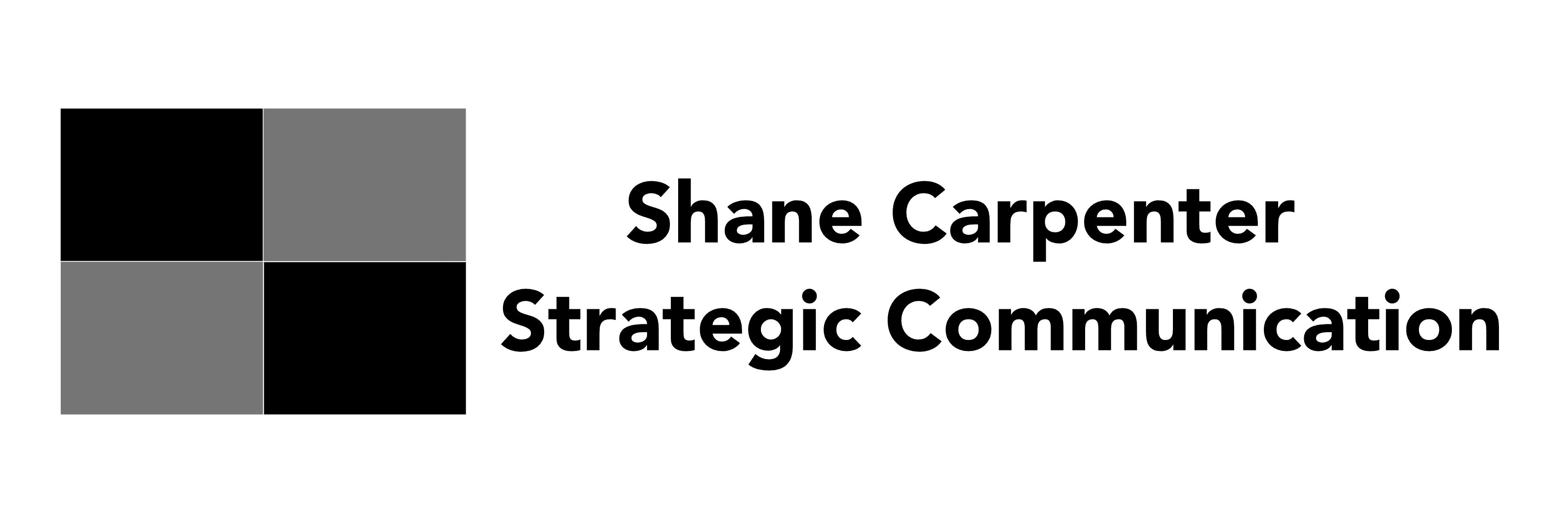
Planning can be arduous. Even more so if you don’t have a process or a model to help you. Well, lucky for us there is something that we can use to help put together a great marketing communication plan.
It’s called GSOT. I have talked about before in a post a few months ago when I wrote about planning.
For those of you who missed it, GSOT stands for:
- Goals
- Strategy
- Objectives
- Tactics
Let’s take a closer look at how what GSOT is and how you can apply it to your planning process.
Define Your Goals
Goals are the destination. Without them, we would just be wandering aimlessly hoping we were achieving something. Strange enough that’s what many people do. Many organizations fall victim to this too.
There is activity but it’s like a group of horses all pulling in random directions. We may get lucky and go in the same direction for a moment but it won’t last and it may not be in the direction we want to go.
When it comes to marketing communication we need to build around business goals. These are the broad primary outcomes the business wants to achieve. It could be something such as to be a top-five vendor in a business category or to have the top-selling truck in the world.
In a post from a few months ago, I gave an example of a goal for Apple in regards to the iPhone when it launched. Apple wanted to sell 10 million iPhones, which was one-percent of the smartphone market, by the end of 2008.
Whatever the goal, it needs to be SMART which is an acronym that stands for:
- Specific
- Measurable
- Attainable
- Relevant
- Timebound
Let’s look at an example of a SMART goal. Dodge’s goal is that the Ram Truck will be the number two selling truck in America for 2019. Let’s breakdown why it’s a SMART goal.
It’s specific. They don’t want to be number four or number three, they want to be number two. It’s measurable. Sales are measured and can be compared to its competition. Is it attainable? Ram was number three in 2017 trailing number two Chevrolet by 85,000 trucks so it does seem attainable. Especially when compared it to trying to capture number one from Ford which outsold it by almost 400,000 trucks. It’s definitely relevant as it is a product line they sell. Finally, it’s timebound. The goal is to be met by the end of 2019.
We have a SMART goal that we can tie back marketing communication. Our activities will be to help the business meet its goal to be the number two selling truck in 2019.
Because we have a goal, our marketing communication activities will be
We will also be able to show the return on investment (ROI) in our activities. That’s key in our marketing communication efforts.
Developing a Strategy
I’ve been in situations where people have said, “We need to be more strategic.” I’ve said it myself or a variation of it on occasions but making this comment usually is just another way of saying, “Our current strategy isn’t working.” That’s assuming there is one begin with but it’s important to understand that strategy is not a destination nor does it work in a vacuum. It is part of a much larger process.
Each of those elements in GSOT is important and they work together. They also work in the order you see. Without goals, you can’t employ a strategy and you have to be clear on your goals before you can move on to the next step.
So you have your goals in place. Now it’s time to develop a strategy but what is it? Simply stated, it’s how we are going to achieve our goals. It can apply to just about anything but being that this is a marketing communication blog I’m going to apply it to some marketing communication examples.
Let’s look at an example that you have experienced many times. Marvel has a new Avengers movie coming out, Their goal is to make $400 million in the United States.
They will likely use posters, movie trailers, interviews, television commercials, and a movie premiere. That’s the strategy. It seems simple, right? Almost too simple. Let’s see it in action.
A website is created with information about the movie. Movie posters are put up in theaters. Movie trailers are run as advertisements, posted to YouTube, and shown before movies in the theater. The stars of the movie make the rounds on late-night TV and talk shows to promote the movie. Interviews are published in magazines. There is a movie premiere that is covered and interviews from the premiere are posted on YouTube. It covers everything in our strategy: posters, movie trailers, interviews, television commercials, and movie premiere.
Let’s look at a different example. This is another one that we see frequently. Julia is running for office and the goal is to get elected. A potential strategy would use television ads, a website, Facebook, campaign events, debates, and social media ads to spread her message. Whether she is running for a national office, a state office, or a local office this is a likely strategy. There was a mayoral race where I live last year and I saw this strategy in play for both candidates (minus the television ads).
It’s easy to overthink strategy but it doesn’t have to be complex. In fact, in most situations, it shouldn’t be complex at all. It just needs to help us reach our goals. So make it simple for yourself by asking, how am I going to achieve my goals?
Determining Objectives
Objectives are the measurable steps that help us achieve our goals. Sometimes goals and objectives get confused. There are similarities. Both are measurable but they are also very different. The objectives tie to the strategy which in turn ties to our goals. Let’s look at an example.
Our goal is to make $2 million in revenue for the year. We are going to use the strategy that was outlined above to achieve our goal. How many leads do we need to make $2 million?
Let’s say the product we are selling costs $500 so we need 4000 people to make a purchase and our website needs to convert 20% of our leads to a sale. 20,000 leads x 20% = 4000 conversions/sales.
Based on the above information, our objectives are:
- Drive 20,000 leads to the website
- Convert 20% of those leads to customers/sales
If we achieve the objectives through our strategy, we will meet the goal of making $2 million in revenue for the year.
Our example was simple. There are many things that are going to drive objectives such as the product mix, type of industry, cost, profit margins, etc. The bottom line is that objectives are measurable steps that tie to strategy.
Again you can see each step of GSOT has tied back to the step before it and they are interdependent. From the goals to the strategy to the objectives they all work together. But, we aren’t through yet. Let’s talk about adding tactics to your plan.
Developing Tactics
Tactics are the specific steps that we take to achieve our objectives. They are the engine of the GSOT model. However, don’t sacrifice the other steps for the sake of tactics.
Tactics are usually where people like to start. I can understand why. We feel like we are accomplishing something tangible when we engage in tactics. While something is being accomplished, without the previous steps in GSOT, it’s just activity that may or may not get us to a result we want.
I used to play the drums. When I played a song, we just didn’t sit down and start playing. Songs have their own maps. There are intros, verses, bridges, choruses, and solos. Not every song will have all the same elements but when I played a song, I needed to know what the elements were. The song will dictate how I play and even to a degree, what I play. You don’t play an R&B song in the same way you play a metal song or a jazz song the same way you play a hip-hop song.
Look at it another way. Imagine you are going on vacation. You could just jump in the car and take off but if you haven’t determined the destination, you’re just going to be driving around. You need to know where you’re going so you can plan appropriately.
Let’s go back to our earlier business example. We need 20,000 leads. We have a strategy that is employing blog articles, media relations, social, and ads. Here is a list of tactics we can use:
- Two blog posts posted Monday – Friday
- Promote each blog post on Twitter three times daily
- Promote each blog post on Facebook once daily
- Send like content to media outlets asking for a link back
- Weekly advertisement on Facebook, YouTube, and Google
These are just examples. Other tactics can include videos, podcasts, and webinars. The kind of content created would, of course, depend on your organization and its customers/donors (as would your strategy).
As you can probably see, strategy and tactics tie together.
Final Thoughts
Planning takes time and effort but it doesn’t have to be overwhelming. GSOT provides us the template for planning. It walks us through each step in the order we need to think of it to help produce our plan.
Next time you create a plan, don’t forget about GSOT. It will focus your efforts to help you develop a great plan.
- Is Your Marketing Connected? - March 6, 2025
- Stop Planning and Start Strategizing - October 24, 2024
- The Importance of Creating a Connection With Your Marketing - June 6, 2024
